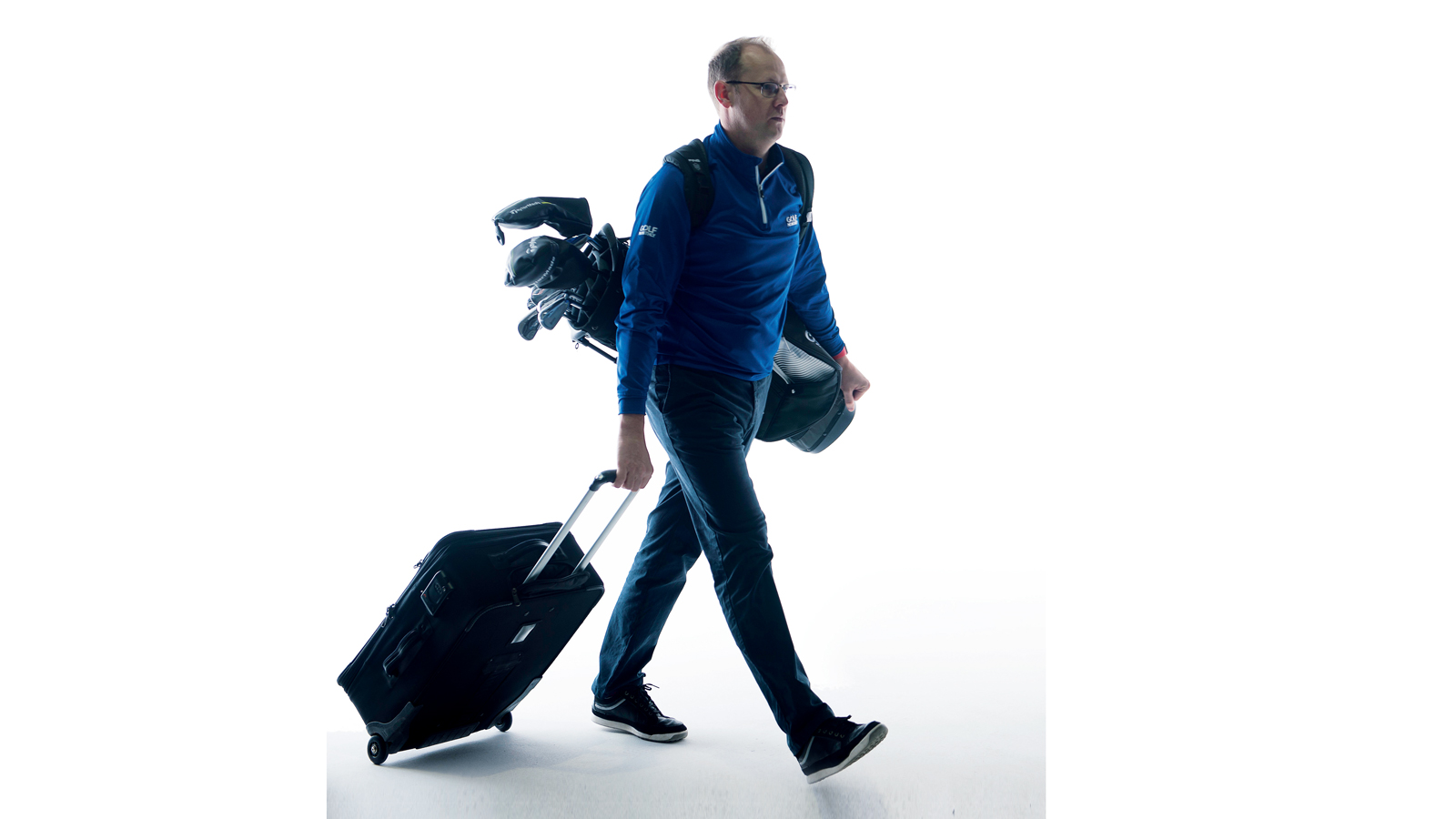How To Fly With Golf Clubs
From booking to packing to travelling; the details you’ll need if you’re planning to take your clubs on a flight.


How to fly with golf clubs: From booking to packing to travelling; the details you’ll need if you’re planning to take your clubs on a flight.
How To Fly With Golf Clubs
The whole process of flying has become more complicated over the last 18 months because of Covid regulations and varying requirements from country to country.
Flying with golf clubs may seem like another hassle to cope with, but if you take the right approach, it’s pretty straightforward.
Related: Best Golf Travel Bags
If you’re planning to fly with golf clubs, first thing to check is the airline policy.
Some airlines will accept golf clubs as your one allowed bag, provided it comes in within the weight limits.
Get the Golf Monthly Newsletter
Subscribe to the Golf Monthly newsletter to stay up to date with all the latest tour news, equipment news, reviews, head-to-heads and buyer’s guides from our team of experienced experts.
Others will include golf clubs along within “sporting equipment” and a surcharge will apply.
Then, some airlines will have a specific rate for carrying golf clubs that will be added to your fare.
Check that you are getting the best deal possible on the route you are flying when it comes to the carriage of golf clubs.
Don’t try to get away with it
It might be tempting to try to dodge a surcharge with the hope that you’ll sneak your clubs through at check in… It won’t work and will only cost you time and possibly more money as extra charges can often ramp up the closer you get to the flight time.
Follow the instructions and book your clubs in correctly.
With a flight booking in place, the next thing is to ensure your clubs will be well protected through the journey.
Travelling through the innards of various airports, being thrown from carousel to baggage cart, to cargo hold and back again, there’s a significant risk of damage.
Get a flight bag and pack the clubs snugly
Be sure to buy or borrow a sturdy golf club flight bag that offers complete padding and protection for your sticks.
At particular risk are the longer clubs – the driver and woods which stick up out of the bag highest.
You can buy rigid flight bags that will protect them most effectively but even with those it’s sensible to include some padding around the club heads and the top sections of the shafts.
Use clothing, towels, or similar to wrap tightly around the clubheads, keeping them in place within the flight bag.
Many flight bags have internal straps to keep the golf bag and clubs secured. Be sure to use these if available.
Others come with a rigid pole that fits inside the bag and sticks up beyond the driver to take the brunt of any impact should the flight bag land on its end.
Also, keep total weight down as much as possible – don’t have 25 golf balls in there for instance. The lighter the flight bag, the easier the job for the baggage handlers and the less likely it will be that the clubs get damaged.
Most modern golf flight bags have a handle and robust wheels so when you arrive at the airport, you can easily wheel your clubs to check in.
Once checked in, it’s likely your clubs will be sent to outsized baggage rather than going straight through with regular luggage.
Make sure to allow an extra 10 minutes or so for this.
Check your luggage label
Before heading off to outsized baggage, check the luggage label the check in staff have printed and attached to your flight bag – does it have the right destination on it? You never know, and mistakes can be made.
If all is good, the check in staff will point you in the right direction for outsized baggage – wheel your clubs round, hand them over and watch them disappear into the airport, hopefully to be seen again (in one piece) when you reach your destination.
Or have them shipped
If the whole process of flying with golf clubs seems too stressful, another option is to go with a company like Ship Sticks or My Baggage.
They will collect your clubs from your home, or specified location, and ship them safely to your destination.
It may end up being a little more expensive than flying with your clubs but relieved of the burden, you can “breeze” through the airport as if travelling on a short business trip.
How to fly with golf clubs then? – Check the airline policy and don’t try and fudge it, get a decent flight bag and pack the clubheads tightly, allow enough time to check in and get to outsize baggage, say a little prayer and hope to see your beloved sticks in one piece at the other end.
If it all sounds too much – place a booking with a shipping company and let them carry the weight.

Fergus is Golf Monthly's resident expert on the history of the game and has written extensively on that subject. He has also worked with Golf Monthly to produce a podcast series. Called 18 Majors: The Golf History Show it offers new and in-depth perspectives on some of the most important moments in golf's long history. You can find all the details about it here.
He is a golf obsessive and 1-handicapper. Growing up in the North East of Scotland, golf runs through his veins and his passion for the sport was bolstered during his time at St Andrews university studying history. He went on to earn a post graduate diploma from the London School of Journalism. Fergus has worked for Golf Monthly since 2004 and has written two books on the game; "Great Golf Debates" together with Jezz Ellwood of Golf Monthly and the history section of "The Ultimate Golf Book" together with Neil Tappin , also of Golf Monthly.
Fergus once shanked a ball from just over Granny Clark's Wynd on the 18th of the Old Course that struck the St Andrews Golf Club and rebounded into the Valley of Sin, from where he saved par. Who says there's no golfing god?
-
 Watch Bryson DeChambeau Smash 400+ Yard Monster Drive In LIV Golf Mexico Practice
Watch Bryson DeChambeau Smash 400+ Yard Monster Drive In LIV Golf Mexico PracticeDeChambeau is hitting mega drives this week in the 7,800ft altitude setting of Golf Club de Chapultepec in Mexico City
By Elliott Heath
-
 Tiger Woods Heads 8 Golfers To Make All Time Rich List Of Top 50 Highest Paid Athletes
Tiger Woods Heads 8 Golfers To Make All Time Rich List Of Top 50 Highest Paid AthletesTiger Woods is the second highest paid athlete of all time behind only Michael Jordan in a new top 50 rich list from Sportico
By Paul Higham